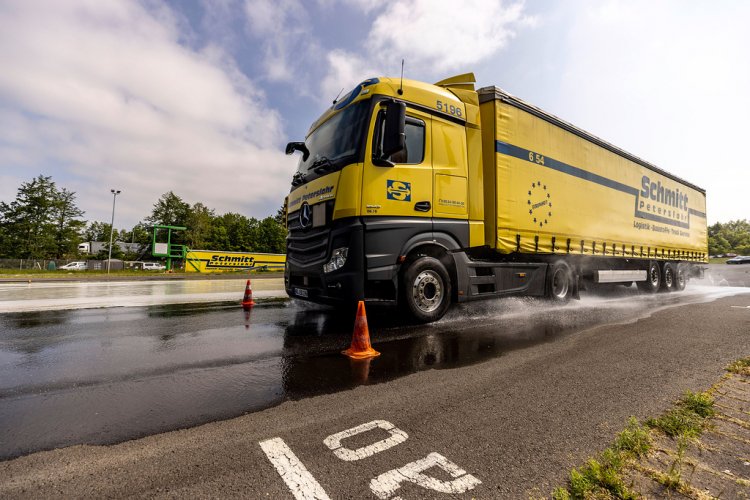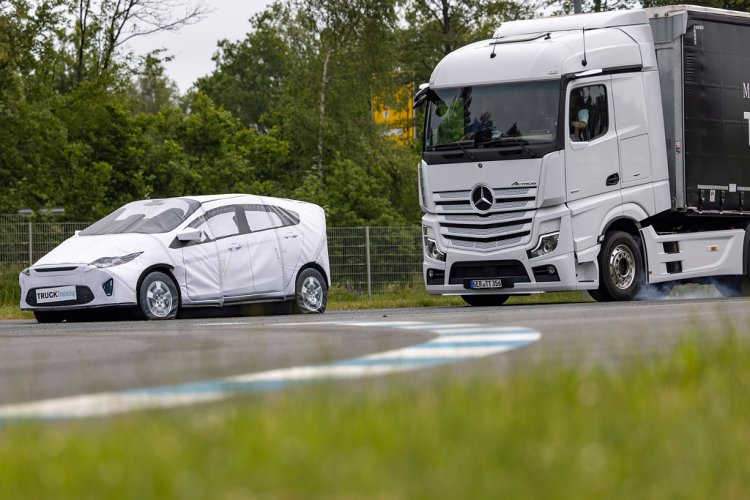The Nürburgring not only offers racing at its best, but is also home to a driving safety centre that the Schmitt-Peterslahr haulage company relies on for its driver training courses. Recently, 35 drivers deepened their knowledge and skills on critical braking and driving situations together with Mercedes-Benz TruckTrainers and instructors from the driving safety centre.
Schmitt-Peterslahr fleet manager Patrick Kölbel: "It's important to me that we get a direct presentation from the manufacturer of what the truck can do. The Mercedes-Benz trainers are simply a bit better at the subjects matter." TruckTrainer Steffen Martin adds: "We are happy to show what our fifth-generation Active Brake Assist (ABA 5) emergency braking system can do."
If the system detects the risk of an accident with a vehicle in front, a stationary obstacle or a person crossing, coming from the opposite direction or running in their own lane, the driver is first warned. If he does not react adequately, the system can initiate partial braking. If a collision is nevertheless imminent, the ABA 5 from Mercedes-Benz Trucks can perform an automated emergency braking manoeuvre - on moving persons up to a vehicle speed of 50 km/h. "Only our ABA 5 can do that," Martin explains.
The participants trained at five stations. The team of instructors combined a presentation on the safety and assistance systems of Mercedes-Benz Trucks - for example, on predictive powertrain control with Predictive Powertrain Control - with a demonstration of the performance of the ABA 5 emergency brake assistant on the track and brake training for the participants. Patrick Kölbel: "Pushing yourself to the limits is enormously important. Many drivers have inhibitions about stepping on the brake pedal fully and making an emergency stop in tricky situations."
Further practical exercises took place on slippery and wet surfaces, which simulate well the driving behaviour on slippery roads or even snow. Many drivers had an "aha" experience: even at a speed of 10 km/h, a few percent gradient is enough to make lane keeping a challenge. At another station, the focus was on manoeuvring, for example, in a pole lane and in cornering situations. There is a reason why this second focus took up a large part of the training: "80 per cent of the damage happens in the slow driving area," says Peter Schmitt, Managing Director at Schmitt-Peterslahr.


No comments:
Post a Comment